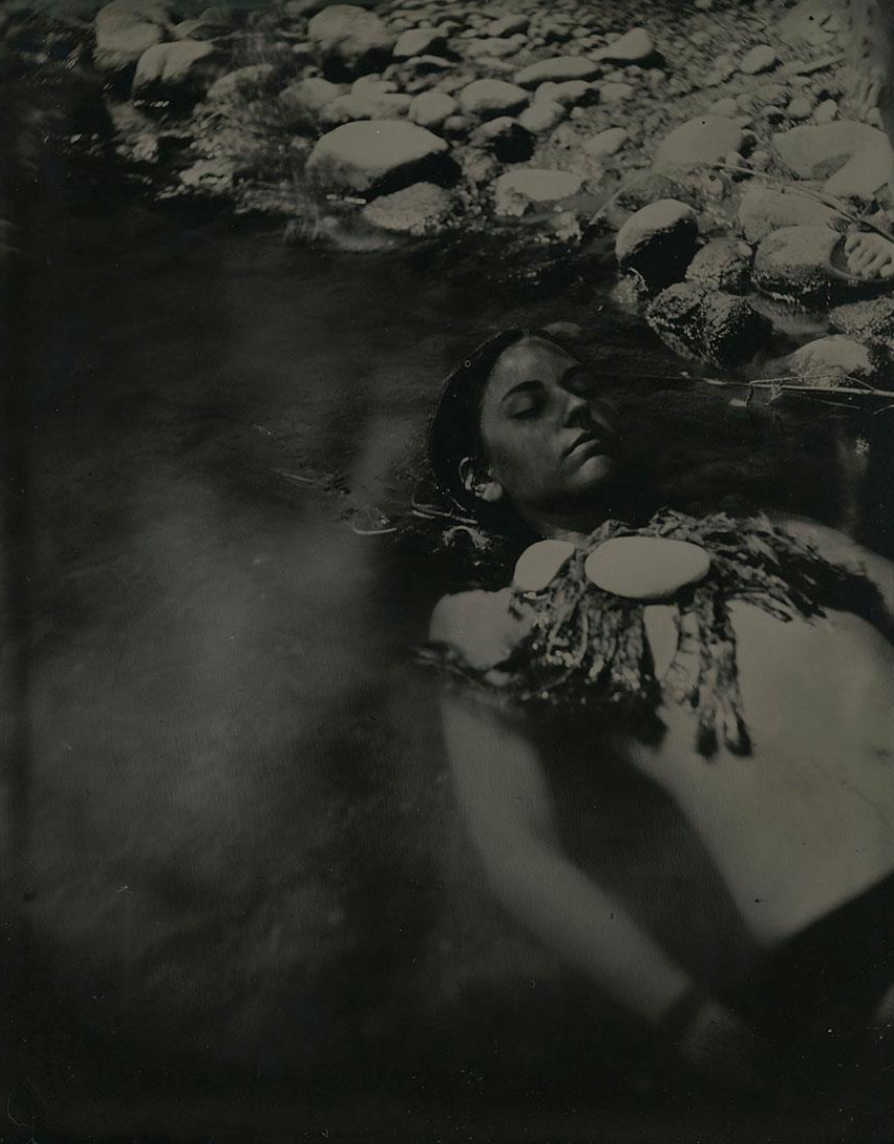
Successful AER applicant, Sophie Anna Gibbings, shares letter of motivation for the Domaine de Boisbuchet residency

- Written byPost-Grad Community
- Published date 06 June 2023

Sophie Anna Gibbings, MA Contemporary Photography: Practises and Philosophies (Central Saint Martins) has been selected for the AER residency at Domaine de Boisbuchet residency programme based in France
Set up by Professor Lucy Orta UAL Chair of Art for the Environment - Centre for Sustainable Fashion in 2015, The Art for the Environment International Artist Residency Programme (AER) provides UAL graduates with the exceptional opportunity to apply for short residencies at one of our internationally renowned host institutions, to explore concerns that define the 21st century – biodiversity, environmental sustainability, social economy, and human rights.
Read Sophie's successful proposal
I find myself at the intersection of art and science. Art remains more open than science, as it can convey emotional messages across barriers that so often divide us. The artist dissolves binaries between discourses and builds bridges that connect art to world matters, often providing us with a valuable new perspective to envision our world.
I have a background in both regenerative agriculture and alternative process photography. These discourses are not commonly woven together and applied to the arts. I use the language of regenerative art, which I introduced and wrote extensively on for my dissertation, as an entry point for my practice. I define regenerative art as a creative act that stems from an ecology of the mind and addresses issues from the vantage point of a regenerative planet.

Before beginning my master’s degree, I worked on a regenerative farm called Oasis Citadine in Montpellier, France. This experience taught me the importance of community and biodiversity. Regenerative agriculture provides for the human species by supplying our food, however, unlike commercial agriculture, we don’t see ourselves as superior to nature but rather we understand that reciprocity is necessary in securing our future on Earth. The plants provide for us, and we nurture the plants in return. During my time on the farm, the soil and I became symbiotic. I listened intently to the plants and worked in harmony with them. These practices are now deeply woven into my creative practice. My practice stems from an engagement in direct interactions with the Earth’s mineral and organic matter. Together, we are two artists collaborating.
Alternative photographic processes have always captivated me. They are alchemical in that they evoke magic and result in one-of-a-kind handmade artworks. However, the processes I once practiced are no longer sustainable. Our attachment to having our work last forever is problematic and one of the reasons we are faced with a climate crisis. I am concerned with material considerations just as much, if not more, as aesthetics. Our visual language needs to shift so that we can take care of our planet while still creating beautiful artworks.

I now look to organic materials to replace these harmful chemicals I once relied on. Being a member of The Sustainable Darkroom, an artist led collective in London, has allowed for many collaborations with both artists and Earths materials. I work collaboratively with artists to develop an environmentally friendly photographic darkroom practice that challenges the environmental impact and sustainability of being an artist. Over the last few months, I have been testing seaweed as photographic developer to make artworks that are completely regenerative. The results of these works have been extraordinary, and this is just the beginning of my exploration. Getting the opportunity to further explore the material of seaweed in Marseille would be a huge steppingstone in my future creative endeavors.

Joining in with the Department of Seaweed and working with Julia Lohmann and Violaine Buet would be a transformative collaborative experience. The material of seaweed is close to my heart as I have lived by the sea my entire life. Having a week to give this material the attention it deserves would deepen my connection to seaweed and bring it to the forefront of my practice. The projects that will emerge beyond the residency will be centered around this material. It is my hope that after this residency, I will have refined by photographic process to replace harmful chemicals with seaweed and make entirely regenerative artworks. And to further circulate this knowledge, I would plan to host workshops specifically on seaweeds potential as photographic chemistry.
It is my hope that my work makes a case for its positioning in the intersections of art and science and how this way of making proposes a unique benefit to art concerned with climate change. There is a mutual flourishing in this collaboration, and it is my hope that the surrounding nature and other resident participants at Domaine de Boisbuchet will also benefit from my offerings.
Related links
- Follow Sophie on Instagram
- Arts for the Environment Residency 2023
- Domaine de Boisbuchet
- UAL Post-Grad Community
UAL Post-Grad Community
Established in 2013, Post-Grad Community is an inclusive platform for all UAL postgraduate students to share work, find opportunities and connect with other creatives within the UAL and beyond. Find out more